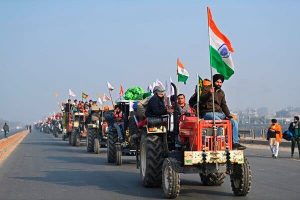The state government is lifting business and gathering restrictions in “microclusters” throughout its territory that had seen higher spread of the coronavirus, including areas in Nassau and Suffolk counties and Brooklyn and Staten Island that had been deemed hot spots, Gov. Andrew M. Cuomo said Wednesday.
The governor also said that the state is going “week-to-week” on managing vaccine plans, because 96% of the first dosages it had received from the federal government for the first six weeks of the vaccination campaign have been used.
Cuomo said the spike in cases triggered by more gatherings through the holiday period starting in late November is over, allowing for relaxing rules restricting restaurants, mass gatherings and placing capacity limits on houses of worship.
While he said the state is being “hypercautious” in New York City, due to the density of its population and venues, Cuomo said he is discussing with the mayor, local elected officials and other stakeholders and expects to make an announcement soon on restrictions in indoor-dining by the end of the week. “I fully understand how difficult it is that they are closed,” he said.
Key to those decisions, Cuomo said, has been watching the metrics on positivity levels for new cases and hospital capacity per region, even as he continued to alert that new strains of the virus are “something to watch” and said the state is effectively out of vaccine supply.
“”The holiday surge was anticipated. The holiday surge did happen,” with a rise in cases and hospitalizations across the board, Cuomo said, ” … but now it’s over.”
Among the state areas where neighborhoods will be freed from additional limits on business activity and gatherings are so-called orange zones in Staten Island and Westchester County and lesser-restricted yellow zones in Nassau, Suffolk, Brooklyn, Staten Island and Westchester. All statewide coronavirus mitigation rules remain in effect, state officials said.
The state has set a hospital capacity threshold of 15% to decide whether to close regions to prevent health systems from being overwhelmed. Cuomo said all regions in the state are well above that level, with Long Island at 29% and New York City at 31%.
In the latest test results from Tuesday, the state measured an overall positivity rate of 5.44% out of 202,661 completed tests for the virus. The net number of people hospitalized was 8,771 across the state, a net decrease of 60 from the previous day, though 170 people died of coronavirus-related causes across the state.
Cuomo cautioned that the virus has been constantly shifting and presenting new challenges to the state government and others trying to stem its spread.
“This COVID beast has morphed four times while we’ve been dealing with it,” he told reporters during a livestreamed briefing to reporters. “Tomorrow will be different, if you ask me, and if something changes we will change. We can only make decisions based on the facts that we have today.”
GETTING COVID-19 VACCINES
Who qualifies for COVID-19 shots?
New York State expanded the list of qualifying residents to encompass people 65 years of age and older as well as others deemed to be immunocompromised. The state had recently expanded its vaccination program to include essential workers and people 75 years of age and older in addition to health care workers and nursing home residents and staff, among others. The supply of vaccines is limited even as more groups are added. Hospitals will continue to prioritize unvaccinated members of the first phase, focusing largely on health care workers. The following are the qualifying categories, as revised on Jan. 12.
Group in Phase 1A
The state said about 2.1 million state residents belong in this group, including:
- Health care workers at hospitals who interact with patients.
- Residents and staff at nursing homes and assisted living facilities.
- Dentists, psychologists and others deemed health care workers with direct contact with patients.
- Employees of Federally Qualified Health Centers.
- EMT volunteers and staff.
- Coroners, medical examiners, some funeral workers.
- Staff and residents of state facilities for people with developmental disabilities, mental health care and addiction services.
- Employees at urgent care centers.
- Individuals administering COVID-19 vaccines, including local health department staff.
- Staff at ambulatory centers.
- Home care and hospice workers.
- Residents and staff at other congregate care facilities.
Group in Phase 1B
The state estimated about 3.2 million residents belong in this group, including:
- People 75 years of age and older.
- Teachers and education workers, including in-person college instructors, substitute teachers, student teachers, school administrators, paraprofessional staff, support staff, contractors in schools and bus drivers.
- First responders, including police; firefighters; state police; sheriff’s offices; county, town and village police departments, and other law enforcement offices.
- Public safety workers, including dispatchers and technicians.
- Public transit workers, including airport, railroad, subway, bus, ferry and Port Authority employees.
- Corrections officers.
- Other sworn and civilian personnel, such as court and peace officers.
- Grocery store workers dealing with the public.
- Individuals living in homeless shelters.
Added to follow federal recommendations:
- People 65 years of age and older.
- People who are deemed to be immunocompromised. The state will issue specific guidance on who qualifies.
SOURCE: New York State, Northwell Health.
Check back for updates on this developing story. Sign up for COVID-19 text alerts at newsday.com/text.



















